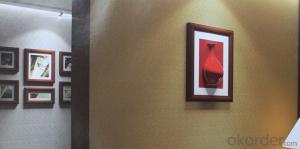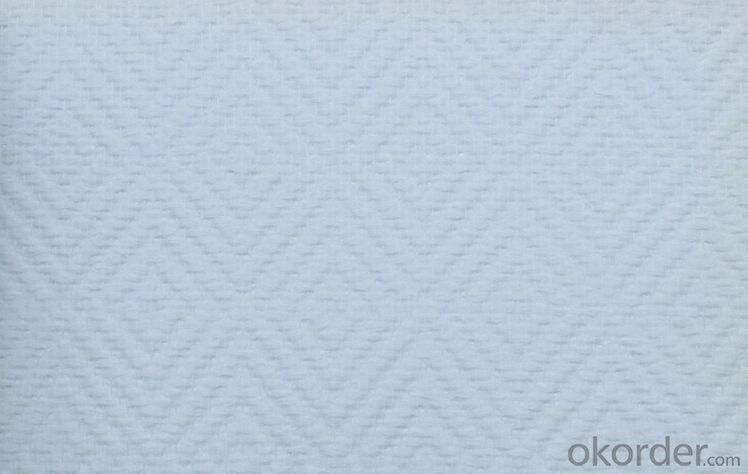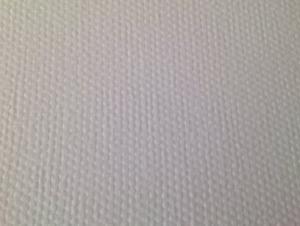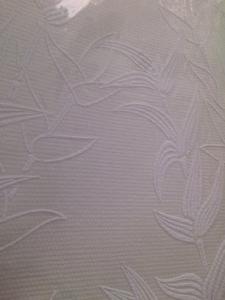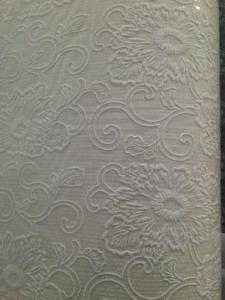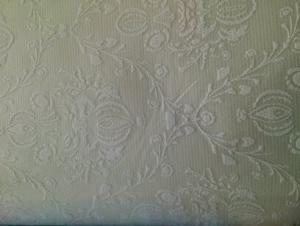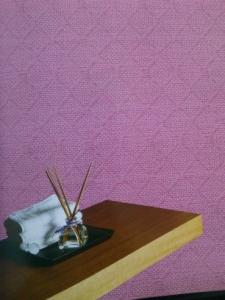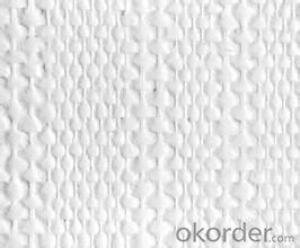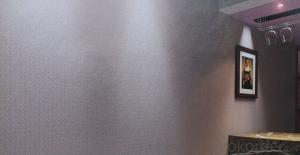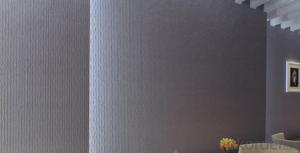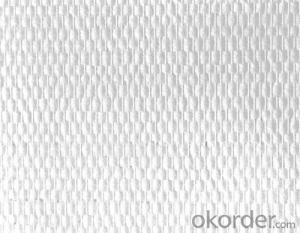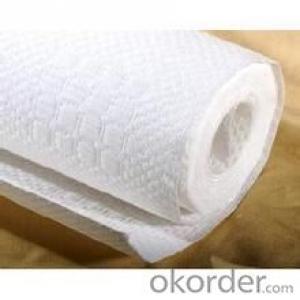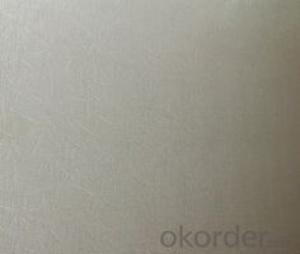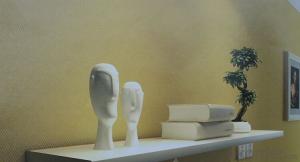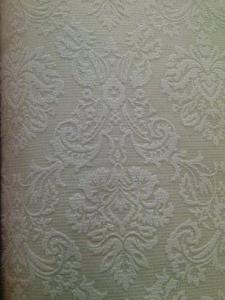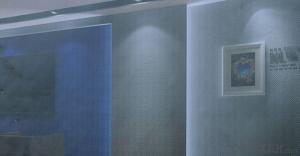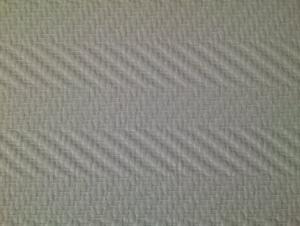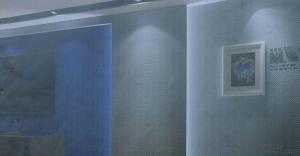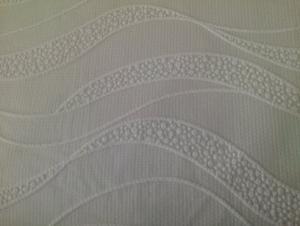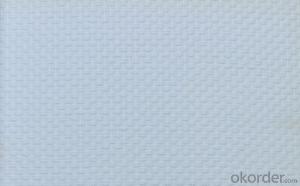Fiberglass Wallcovering Cloth - Top Quality Choice
- Loading Port:
- Shanghai
- Payment Terms:
- TT OR LC
- Min Order Qty:
- 100 m²
- Supply Capability:
- 100000 m²/month
OKorder Service Pledge
OKorder Financial Service
You Might Also Like
Fiberglass Wallcovering Cloth Top Quality Choice
Specification of Wallcovering Cloth
.Environment-friendly
.Flame retardent
.Air permeability
.Waterproof
.Anti-corrosion
.Imcomparable strength
.Abundant patterns and colors
.Long life time
Packing Details
.Width:1m
.Length:25/50m
.Each roll of wallcovering cloth is wrapped in a shrinking polythene film,then put in carton
Introduction of wallcovering Cloth
Fiberglass wallcovering cloth,that combines the versatility of paint,from latex to epoxy,with the
strength and benefits of woven fiberglass textile yarns to meet the most demanding wall finish
requirments.Fiberglass textile yarns,as a kind of natural materials,are woven into various textures
and patterns and then treated with a natural starch binder for dimensional stability during the hanging
process.
Compared with traditional wall papers,fiberglass wall covering cloth has the following advantages:
Environment friendly,Flame Retardant,Air Permeability,Shock Resistance,Waterproofing,Anti-corrosion,Abundant Colors&Patterns.
Product Show
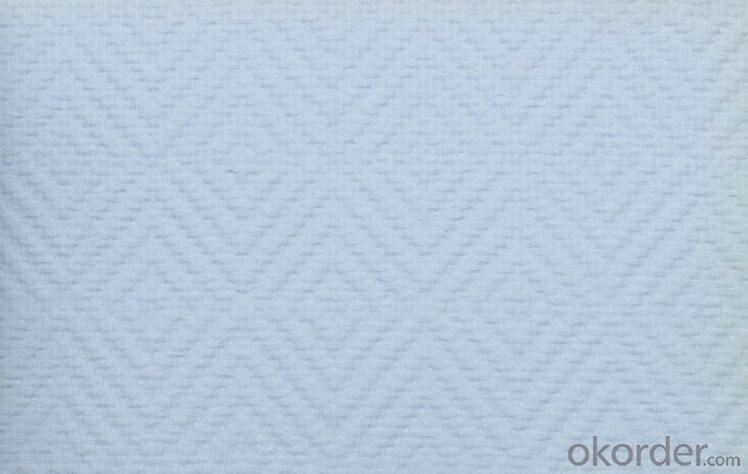
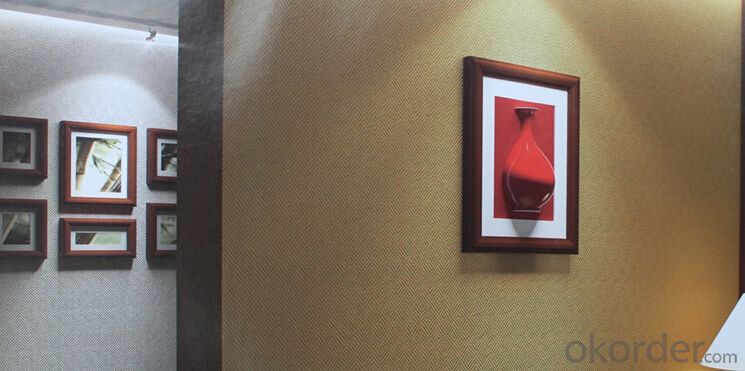
Application of Wallcovering Cloth
As a high-tech indoor decorating material,fiberglass wallcovering cloth is widely used in resident homes,
offices and shops and even cinemas,theatres,hotels and hospital faclilties,air ports,office buildings,shopping centers and schools.
Test Report
Our product has passed test by SGS as follows:
EN 12956:for determination of dimensions,straightness,spongeability and washability.
EN 12149:for determination of magration of heavy metals and certain other elements,of
vinyl monomer and of formaldehyde release.
EN 20105-B02:light solidity.
Our products had passed test of Fire Retardancy M1 Class by LINE
- Q: Is special equipment needed to install fiberglass wallcovering cloth?
- Yes, special equipment is typically needed to install fiberglass wallcovering cloth. This is because fiberglass wallcovering cloth is a specialized material that requires specific tools and techniques for proper installation. Some of the equipment that may be necessary includes a wallpaper smoother, a trowel or putty knife, a paint roller or brush, a utility knife, and a wallpaper adhesive. Additionally, it may be helpful to have a measuring tape, a level, and a straight edge for accurate and precise installation. Overall, using the appropriate tools and equipment will ensure a successful and professional-looking installation of fiberglass wallcovering cloth.
- Q: Can fiberglass wallcovering cloth be used in exterior window surrounds or trim?
- Fiberglass wallcovering cloth is not typically recommended for use in exterior window surrounds or trim. While fiberglass is a durable and versatile material, it is primarily designed for interior applications such as walls and ceilings. Exterior window surrounds and trim are exposed to various weather conditions, including rain, sunlight, and temperature fluctuations. These factors can cause the fiberglass cloth to deteriorate over time and compromise its effectiveness. Instead, it is advisable to use materials specifically designed for exterior applications, such as PVC or vinyl trim, aluminum, or wood. These materials are better equipped to withstand the elements and provide long-lasting protection for your windows and exterior surfaces.
- Q: Is fiberglass wallcovering cloth resistant to humidity?
- Yes, fiberglass wallcovering cloth is resistant to humidity.
- Q: Can fiberglass wallcovering cloth be used in retail or commercial office spaces?
- Yes, fiberglass wallcovering cloth can be used in retail or commercial office spaces. Fiberglass wallcovering cloth is a durable and versatile material that is suitable for high-traffic areas. It is resistant to wear and tear and can withstand heavy use, making it ideal for commercial spaces where there is a constant flow of customers or employees. Additionally, fiberglass wallcovering cloth is also fire-resistant, which is crucial for safety in commercial buildings. It is available in a variety of colors and patterns, allowing for customization and creating a professional and attractive environment. Overall, fiberglass wallcovering cloth is a suitable choice for retail or commercial office spaces due to its durability, fire resistance, and aesthetic appeal.
- Q: Does fiberglass wallcovering cloth have any odor or off-gassing?
- Fiberglass wallcovering cloth typically has no odor or off-gassing due to its non-porous and inert nature, making it a safe and odor-free choice for interior applications.
- Q: What are the different types of fiberglass wallcovering cloth?
- There are several types of fiberglass wallcovering cloth available, including woven, non-woven, and textured varieties. Woven fiberglass cloth is made from tightly woven fiberglass threads, providing a smooth and durable surface. Non-woven fiberglass cloth is made from random fibers that are bonded together, offering flexibility and ease of installation. Textured fiberglass cloth features raised patterns or textures, adding dimension and visual interest to walls.
- Q: Can fiberglass wallcovering cloth be removed without damaging the walls?
- Yes, fiberglass wallcovering cloth can typically be removed without damaging the walls if done carefully and with the right tools and techniques. Here are some steps to follow for safe removal: 1. Start by preparing the area: Clear the room of any furniture or obstacles that may be in the way. Lay down drop cloths or plastic sheeting to protect the floor and any remaining surfaces. 2. Wet the surface: Use a sponge or sprayer to thoroughly wet the fiberglass cloth. This will help loosen the adhesive and make it easier to remove. 3. Score the surface: Use a scoring tool or utility knife to create small punctures or cuts in the fiberglass cloth. This will allow the water to penetrate and further loosen the adhesive. 4. Peel off the cloth: Starting from a corner or edge, gently peel off the fiberglass cloth. Use a putty knife or scraper to help lift it away from the wall if necessary. Take your time and be careful not to apply too much force, as this may damage the underlying wall. 5. Remove any remaining adhesive: Once the cloth is removed, there may be some adhesive residue left on the walls. Use a wallpaper removal solution or a mixture of warm water and vinegar to soften the adhesive. Gently scrape it off with a putty knife or use a sponge to wipe it away. 6. Clean and repair the walls: After all the cloth and adhesive are removed, clean the walls with a mild detergent and water to remove any remaining residue. Inspect the walls for any damage or imperfections and repair as needed before applying a new wallcovering or paint. It is important to note that the ease of removal may vary depending on the specific type and quality of the fiberglass wallcovering cloth, as well as the condition of the underlying wall surface. If you are unsure or concerned about potential damage, it may be best to consult a professional for assistance.
- Q: Is fiberglass wallcovering cloth resistant to scratches and dents?
- Without a doubt, fiberglass wallcovering cloth boasts an impressive resistance to scratches and dents. Its durability and strength are unmatched, as it is specifically engineered to endure impact and fend off any potential harm. The meticulous composition and construction of this material render it exceptionally impervious to both scratching and denting, making it an ideal option for heavily frequented areas or places prone to inadvertent damage. Moreover, this remarkable fabric often undergoes a protective coating process, fortifying its defenses against scratches and dents, guaranteeing its enduring performance and preserving its aesthetic allure throughout the years.
- Q: Can fiberglass wallcovering cloth be used in exterior landscape features or structures?
- Yes, fiberglass wallcovering cloth can be used in exterior landscape features or structures. Fiberglass is a durable and weather-resistant material that is commonly used in construction and outdoor applications. It is known for its strength and resistance to moisture, heat, and UV damage. When used in exterior landscape features or structures, fiberglass wallcovering cloth can provide added protection and durability. It can be applied to surfaces such as walls, pillars, or fences to create a seamless and aesthetically pleasing finish. Additionally, fiberglass wallcovering cloth is available in a variety of colors and textures, allowing for customization and versatility in outdoor design. Overall, utilizing fiberglass wallcovering cloth in exterior landscape features or structures can enhance their longevity and withstand the elements effectively.
- Q: Can fiberglass wallcovering cloth be used in exterior wayfinding or signage systems?
- Yes, fiberglass wallcovering cloth can be used in exterior wayfinding or signage systems. It is a durable and weather-resistant material that can withstand outdoor conditions and provide a long-lasting solution for signage and wayfinding purposes.
Send your message to us
Fiberglass Wallcovering Cloth - Top Quality Choice
- Loading Port:
- Shanghai
- Payment Terms:
- TT OR LC
- Min Order Qty:
- 100 m²
- Supply Capability:
- 100000 m²/month
OKorder Service Pledge
OKorder Financial Service
Similar products
Hot products
Hot Searches
